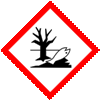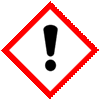Cupric Copper Sulfate Pentahydrate Anhydrous SDS of Suppliers Exporters, Manufacturers
Please visit Main Page of Cupric Copper Sulfate Manufacturers.
Copper Sulphate Anhydrous Pentahydrate or Cupric Sulfate Anhydrous Pentahydrate SDS, Safety Data Sheet
MSDS Sheet, Material Safety Data Sheet
1. Product Identification
Product Name & Other Names: Copper (II) Sulfate or Cupric Sulfate.
CAS Number: 7758-98-7 Anhydrous and 7758-99-8 Pentahydrate
EINECS EC Number: 231-847-6
Molecular Weight: 159.62 Anhydrous and 249.69 Pentahydrate.
2. Hazards Identification
GHS, Globally Harmonized System Classification in accordance with 29 CFR 1910
Classification according to Regulation (EC) No 1272/2008
Acute toxicity, oral Category 4, H302
Skin corrosion/irritation Category 2, H315
Serious eye damage/eye irritation Category 2A, H319
Hazardous to the aquatic environment, long-term hazard Category 1, H410
Labeling according to Regulation (EC) No 1272/2008
GHS Label Elements  Aquatic Toxicity |
GHS Label Elements |
Signal Words: Warning
Hazard statements:
H302: Harmful if swallowed.
H315: Causes skin irritation.
H319: Causes serious eye irritation.
H410: Very toxic to aquatic life with long lasting effects.
Precautionary statements:
P264: Wash … thoroughly after handling.
P270: Do not eat, drink or smoke when using this product.
P273 Avoid release to the environment.
P280: Wear protective gloves/protective clothing/eye protection/face protection.
P330: Rinse mouth.
P301+P310: IF SWALLOWED: Immediately call a POISON CENTER or doctor/physician.
P302+P352: IF ON SKIN: Wash with soap and water.
P305+P351+P338: IF IN EYES: Rinse cautiously with water for several minutes. Remove contact lenses, if present and easy to do. Continue rinsing.
P332+P313: If skin irritation occurs: Get medical advice/attention.
P337+P313: If eye irritation persists get medical advice/attention.
3. Composition/Information on Ingredients
Product Name & Other Names: Copper (II) Sulfate or Cupric Sulfate.
CAS Number: 7758-98-7 Anhydrous and 7758-99-8 Pentahydrate
EINECS EC Number: 231-847-6
4. First Aid Measures
Always seek medical attention after first aid measures are provided.
Inhalation: Remove to fresh air. If not breathing, give artificial respiration. If breathing is difficult, give oxygen. Get medical attention.
Ingestion: Contact a poison control center or physician for treatment advice. Never give anything by mouth to an unconscious person. Get medical attention.
Skin Contact: Wipe off excess material from skin then immediately flush skin with plenty of water for at least 15 minutes. Remove contaminated clothing and shoes. Get medical attention. Wash clothing before reuse. Thoroughly clean shoes before reuse.
Eye Contact: Immediately flush eyes with plenty of water for at least 15 minutes, lifting lower and upper eyelids occasionally. Get medical attention immediately.
5. Fire Fighting Measures
Flammability of the Product: Non-flammable.
Products of Combustion: During a fire, irritating and highly toxic gases may be generated by thermal decomposition or combustion.
Explosion: Copper Sulfate is Slightly explosive in presence of heat & Metals.
Fire Extinguishing Media: Use any means suitable for extinguishing surrounding fire. Use water spray, alcohol-resistant foam, dry chemical, or carbon dioxide.
Extinguishing Media Not recommended: None specified.
Special Information: In the event of a fire, wear full protective clothing and NIOSH-approved self-contained breathing apparatus with full face piece operated in the pressure demand or other positive pressure mode. At elevated temperatures under fire conditions, it may produce toxic or irritating fumes. Fire-extinguishing work is done from the windward and the suitable fire-extinguishing method according to the surrounding situation is used. Uninvolved persons should evacuate to a safe place. Material is acidic when dissolved in water, contact with magnesium metal may evolve hydrogen gas. Anhydrous cupric sulfate formed on water loss (white color). Anhydrous salt will ignite hydroxylamine if present.
6. Accidental Release Measures
Personal precautions, protective equipment, and emergency procedures: Ventilate area of leak or spill. Avoid breathing dust/fumes/gas/mist/vapors/spray. Use individual protective equipment (waterproof boots, suitable protective clothing, safety glasses, etc.). Restrict unprotected personnel from the area. Prevent any contact with hot surfaces. Do not approach facing the wind.
Environmental precautions: Do not let the product enter drains, soil, or water sources.
Methods and materials used for containment cleanup procedures and Storage: Contain spilled material. Cover with an inert, non-combustible absorbent material, (e.g., sand, earth, diatomaceous earth, vermiculite). Vacuum or sweep-up and remove to an approved disposal container. Finish cleaning by spreading water on the contaminated surface and allow to evacuate as per law.
7. Handling and Storage
Danger! Very harmful if swallowed. Do not ingest.
Precautions for safe handling: Apply according to good manufacturing and industrial hygiene practices. Ensure proper ventilation. In case of insufficient ventilation, wear suitable respiratory equipment. Wash thoroughly after handling. Do not drink, eat, or smoke while handling. Avoid contact with skin, eyes, and clothing. Minimize dust generation. Avoid breathing dust/fumes/gas/mist/vapors/spray. Avoid contact with eyes, skin, and clothing. Keep container tightly closed. Avoid ingestion and inhalation. Use individual protective equipment (waterproof boots, suitable protective clothing, safety glasses, etc.). Prevent any contact with hot surfaces.
Conditions for safe storage, including any incompatibilities: Store in cool, dry, and ventilated area away from heat sources and protected from sunlight in tightly closed original container. Keep air contact to a minimum. Store protected from heat, sparks and ignition sources and incompatible materials. Do not store with incompatible materials like strong oxidizing agents, alkalis, hydroxylamine, magnesium, hydrazine, nitromethane.
8. Exposure Controls/Personal Protection
Airborne Exposure Limits: Permissible 1 mg/m3 TWA (dust and mist, as Cu, except copper fume) (listed under copper compounds, n.o.s.).100 mg/m3 IDLH (dust and mist, as Cu) (listed under copper compounds, n.o.s.). 0.2 mg/m3 TWA (fume).
Ventilation System: A system of local and/or general exhaust is recommended to keep employee exposures as low as possible. Local exhaust ventilation is preferred because it can control the emissions of the contaminant at its source.
Personal Respirators (NIOSH Approved): For conditions of use where exposure to dust or mist is apparent and engineering controls are not feasible, a particulate respirator may be worn.
Skin Protection: Wear protective gloves and clean body-covering clothing.
Eye Protection: Use chemical safety goggles and/or full-face shield where dusting or splashing of solutions is possible. Maintain eye wash fountain and quick-drench facilities in work area.
Other Control Measures: Maintain good housekeeping in work area. Dust deposits on floors and other surfaces may pick up moisture and cause the surfaces to become slippery and present safety hazards.
9. Physical and Chemical Properties
Appearance: Transparent blue powder or crystals.
Odor: It is odorless.
Odor threshold: Not available.
pH: 3.7-4.2 for 10% solution.
Relative density: Not available.
Boiling Point: Not available.
Melting Point: Not available.
Flash point: Not available.
Auto-ignition temperature: Not available.
Decomposition temperature: Not available.
Upper/lower flammability or explosive limits: Not available.
Vapor pressure: Not available.
Vapor density: Not available.
Evaporation rate: Not available.
Flammability (solid, gas): Not available.
Partition coefficient: n-octanol/water: Not available.
Solubility: It is freely soluble in water.
Viscosity: Not available.
10. Stability and Reactivity
Stability: Stable under ordinary conditions of use and storage.
Hazardous Decomposition Products: Oxides of sulfur, irritating and toxic fumes and gases, oxides of copper, copper fumes.
Hazardous Polymerization: Will not occur.
Incompatibilities: Metals & alkalis. Avoid hydroxylamine, magnesium, hydrazine, nitromethane.
Conditions to Avoid: Incompatibles and moisture. Avoid Heat, Moisture & incompatibles.
11. Toxicological Information
Acute toxicity
Harmful or fatal if swallowed. Product is an eye, skin irritant. Product is a respiratory tract irritant, and inhalation may cause nose irritation, sore throat, coughing, and chest tightness and ulceration and perforation of the nasal septum. Chronic overexposure to this product may cause liver and kidney damage, anemia, and other blood cell abnormalities.
Toxicity data
ORL-RAT LD50 ----- 300mg kg-1
ORL-MOUSE LD50 - 369 mg kg-1
Carcinogenic Effects: Not known to be a carcinogen by IARC NTP ACGIH OSHA.
Mutagenic Effects: Mutagenic for mammalian somatic cells. May cause damage to the following organs: kidneys, liver.
Teratogenic Effects: No information found.
Developmental Toxicity: No information found.
12. Ecological Information
Environmental Fate: When released into the soil, this material is not expected to biodegrade. When released into the soil, this material may leach into groundwater. When released into water, this material is not expected to biodegrade. When released into water, this material is not expected to evaporate significantly. This material is expected to significantly bioaccumulate.
Environmental Toxicity: Toxicity data for copper. This material is expected to be very toxic to aquatic life. The LC50/96-hour values for fish are less than 1 mg/l. The IC50/72-hour values for algae are less than 1 mg/l.
Toxicity to daphnia and other aquatic invertebrates: EC50 - Daphnia magna (Water flea) - 0.024 mg/l - 48 h
48 Hr. EC50 water flea: 0.024 mg/L
96 Hr. LC50 rainbow trout: 0.1 mg/L;
48 Hr. LC50 bluegill: 0.6 mg/L;
96 Hr. LC50 goldfish: 0.1 mg/L.
13. Disposal Considerations
This product is a registered pesticide. Pesticide wastes are acutely hazardous. Improper disposal of excess pesticides or spray mixtures is a violation of Law. Whatever cannot be saved for recovery or recycling should be managed in an appropriate and approved waste disposal facility.
14. Transport Information
DOT USA, TDG Canada & ADR/RID Europe:
UN-Number: UN 3077
Shipping Name: Cupric Sulfate
CLASS 9; Packing group: III
IMDG/IMO & Air Transport IATA/ICAO:
UN-Number: UN 3077
Shipping Name: Cupric Sulfate, Environmentally Hazardous Substance, solid, n.o.s.
CLASS 9 (Miscellaneous Dangerous Goods); Packing group: III.
15. Regulatory Information
USA:
SARA 311/312 Hazards: See section2.
California Prop. 65 Components: This product does not contain any chemicals known to State of California to cause cancer, birth defects, or any other reproductive harm.
16. Other Information
DISCLAIMER: The information and recommendations set forth herein are presented in good faith and believed correct as of the date hereof. It is compiled from various sources, and it is not necessarily all inclusive nor fully adequate in every circumstance. In addition, these suggestions should not be confused with nor followed in violation of applicable laws, regulations, rules, or insurance requirements applicable. This SDS MSDS sheet is intended only as a guide to the appropriate precautionary handling of the material by a professionally trained person using this product. Individuals receiving the information must exercise their independent judgment in determining its appropriateness for a particular purpose. This shall not constitute a guarantee for any specific product features and shall not establish a legally valid contractual relationship. In no case shall our company be liable to loss or damages by the product user.

Please visit Technical Data Sheet of Cupric Copper Sulfate BP Ph Eur USP Analytical Reagent FCC Food Grade Manufacturers.
Cupric Copper Sulfate Anhydrous Pentahydrate BP Ph Eur USP Analytical Reagent FCC Food Grade CAS Number 7758-98-7 Anhydrous, 7758-99-8 Pentahydrate Supplier Exporter, Manufacturer:
Annie Chemie P Ltd
Mumbai 4000010, INDIA
With Agents and offices in UAE, USA, Europe.
e-mail: info@anniechemie.com
Copyright and Usual Disclaimer is Applicable.
May 31, 2025
Exporters to USA, Canada, China, Europe, UAE, Nigeria, Algeria, Turkey, Mexico, Brazil, Chile, Argentina, Australia, Dubai etc.
Perfection is made up of small things and that is a big thing.

